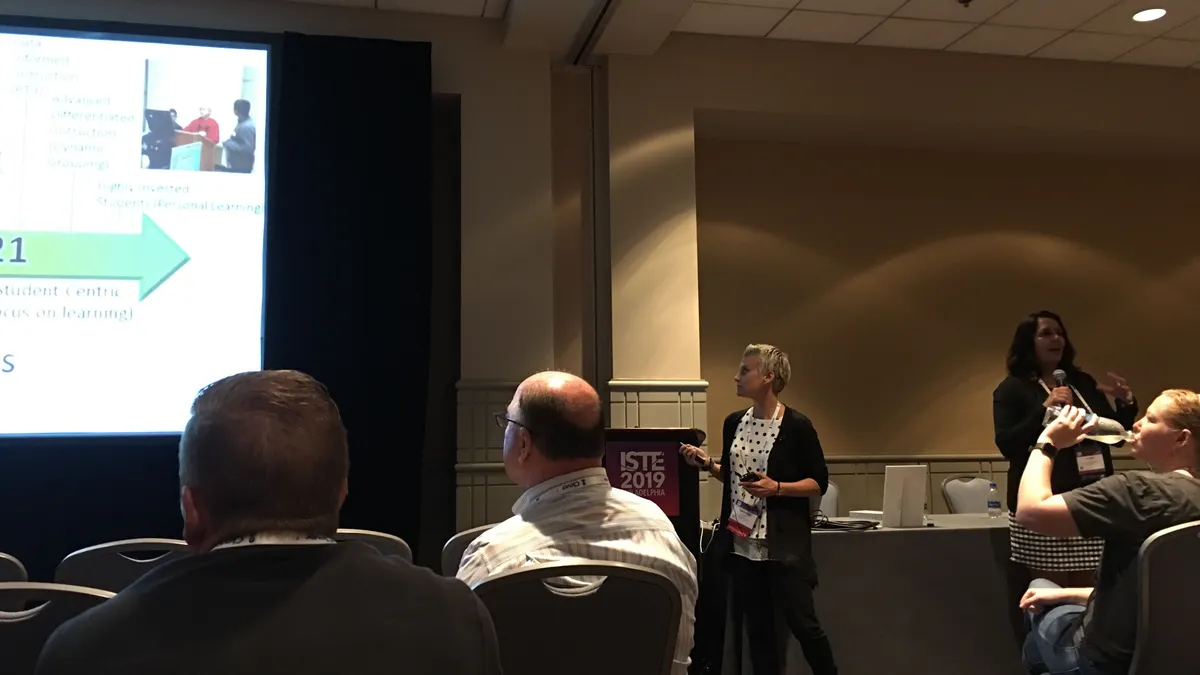PHILADELPHIA — The integration of technology into education — which includes everything from online homework to digital textbooks — has led to increasing concerns around digital equity, said panelists at the 2019 International Society for Technology in Education conference. They also addressed the question of how educators can bridge the gap.
Digital equity, they said, is defined as the equity of devices, bandwidth, infrastructure and skills (also called the digital use divide) and affects learning for students from a range of backgrounds. Those from low-income or rural communities, those with learning or physical disabilities, and girls or minority students are more likely to be affected by this gap.
“There are things you can do to close that gap,” Tracy Smith, assistant to the superintendent for operations for Parkland School District in Pennsylvania, told the audience. Schools from her district began addressing the gap by distributing personal learning devices for every student in elementary, middle and high schools, funded in part by Title IV.
“If we want to support anytime, anywhere learning, we have to ensure that students have access to that learning,” said J.R. Renna, the coordinator of educational technology for Parkland district. “Our work is not complete until every one of our students has access to broadband, high-speed internet at home.” He noted that, considering how central internet access can be to growth and success in the 21st century, ensuring digital equity has become a “moral imperative.”
To make the internet more accessible for students, there are a number of options available for superintendents to explore. Everyoneon.org, a national nonprofit that works to close the digital divide by providing internet access, is one resource. Other resources include Kajeet Smartspot, which makes a mobile hotspot device, school bus hotspots that connect communities by bringing internet to neighborhoods, regional fiber networks supporting 5G, the federal E-rate program that provides funding for affordable broadband, and TechGoesHome.org, another nonprofit that prioritizes low-income and underserved populations.
Once school leaders begin working toward increased accessibility, experts recommend that they also put in place a comprehensive plan that focuses on equitable content. Key in this plan is seeking out feedback from from parents and students, Renna said
School leaders also have a role to play in implementation by ensuring that teachers are trained to use the devices and the related software. Districts can provide this training in a number of ways, said Samantha Edwards, a technology integration specialist for the Parkland district, including: an introduction to personalized learning for all teachers, a one-day tech conference, and tech coaches and mentors in every school building.
“Every step of the way, we’re trying to model the learning that we want to see in the classroom,” Renna pointed out. He also noted that teachers who successfully complete tech training courses should be given professional development hours and additional compensation to encourage fidelity to the program.
While ed tech is an integral part of learning for both teachers and students, the panelists agreed that it's also important to know where to draw the line. For elementary students, educators must be wary of too much screen time, Smith warned, adding that it's important to strike a balance between digital and social-emotional learning.















